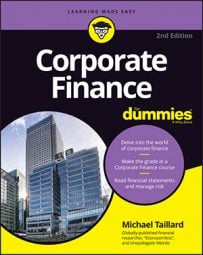To determine how much money an investor really makes, you have to determine the earnings per common share (EPS). When you own a company by yourself, the amount of money the company makes is the amount of money you earn.
In contrast, when you own a share of stock, you still own a part of the company, but you have to split the amount of money the company makes with everyone else who owns stock. So how much money does an investor really make when he owns a share of stock? You find out by determining the earnings per common share (EPS):
Follow these steps to use this equation:
Find the net income and preferred dividends on the income statement near the bottom; preferred dividends should be below net income.
Use the balance sheets of the current year and the previous year to calculate the average outstanding common shares:
Add the number of common shares outstanding from the current period and the number from the previous period and divide the sum by 2.
Subtract the dividends paid out to preferred shareholders (the holders of preferred shares) from the net income.
Divide your answer from Step 3 by your answer from Step 2; the answer is your earnings per share.
Companies always report their earnings per share near the bottom of their income statement, but having this ratio available isn’t helpful unless you know what it means. For investors and corporations alike, this ratio is a measure of the distribution of value that the corporation is generating.
The earnings per share ratio doesn’t give any indication of the quality of a company’s earnings. Two companies that have the same earnings per share may generate their earnings using different amounts of capital, making one more efficient than the other.
However, because earnings per share is often tied to executive pay, management has an incentive to generate low-quality earnings in the short term. This is one reason why you don’t want to rely on just one or two metrics to analyze a company.

